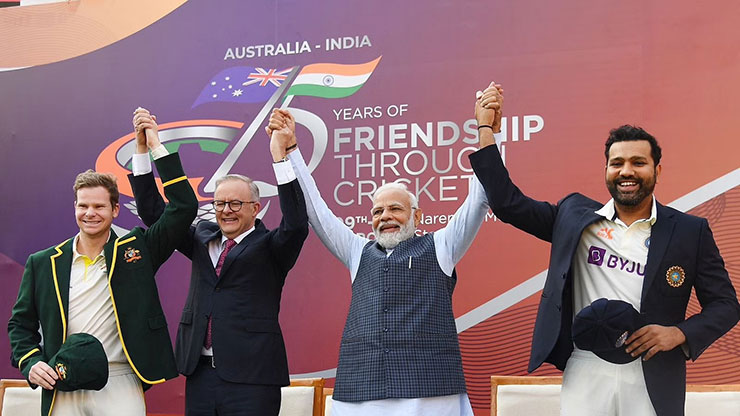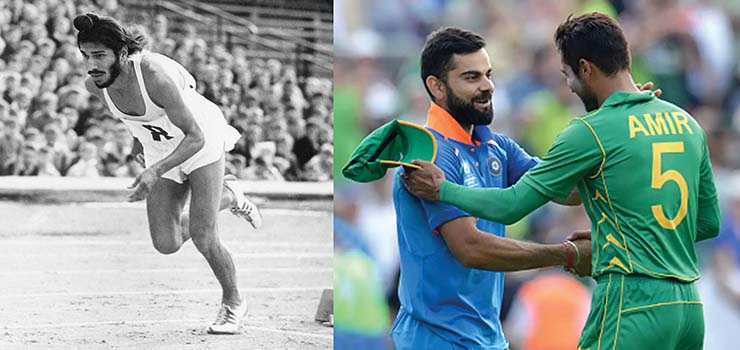
The rapid globalisation and increasing regional grouping like QUAD, AUKUS, I2U2, BRICS, SCO, SARC and BIMSTEC, diplomacy too is embracing new dimensions like digital, health, cultural, and most importantly, sports diplomacy. Unlike other forms of diplomacy, sports diplomacy has no barriers, as sports are a universal phenomenon, transcending linguistic, national and cultural boundaries. Like the objectives of traditional diplomacy, true sportsmanship promotes friendship, respect and tolerance, besides other universal values. Thus, adopting sports as a tool of diplomacy is organic and valuable in creating opportunities for peaceful coexistence between nations.
In today’s global environment, scholars, students and practitioners of international relations are beginning to rethink how sports might be used to tackle climate change, gender inequality and the United Nations’ Sustainable Development Goals. To boost these integrative, positive efforts is to focus on the means as well as the ends, that is, the diplomacy, plural networks, and processes involved in the role sports can play in tackling the monumental traditional and human security challenges of our time.
There are many ways to use sports to promote diplomacy; by hosting international sporting events such as the Olympics or the FIFA World Cup and participating and succeeding in international events hosted by other countries.
Alternatively, states can participate in international sporting events, which can increase their exposure when their citizens perform well in events. Joining competitions can also show nations’ support for peace-building when they are willing to compete with adversaries, such as when North and South Korean or Palestinian and Israeli athletes gather together on the field, court or track.
An example of sports playing a role in improving ties was the Turkey vs. Armenia football match. One of the biggest sticking points in the on-going war of words between Turkey and Armenia is over Turkey’s refusal to acknowledge the Armenian Genocide that claimed around 1.5 million lives during World War I. In 2008, the two teams were set to play a World Cup qualifying match, and the Turkish president accepted an invitation from the Armenian president to watch together. In another gesture of goodwill, Armenia loosened visa restrictions so Turkish fans could watch the game in Armenia. The match opened new diplomatic channels between the two countries expecting a thaw in relations.
Although sports diplomacy is usually executed at a larger scale by a nation’s government, many actors can promote the concept, such as individual athletes and competitive or amateur teams. In addition, within the private sector, think -tanks, NGOs, and other private initiatives can also play a supporting role to a government’s efforts and adapt sports diplomacy within their areas of expertise.

One need not be a diplomat
Sports may not affect major geo-political shifts, but they can foster dialogue on a personal level, which, in turn, can transform perceptions and attitudes. Meeting, or competing with, people from countries that have been portrayed negatively by the media or government humanising adversaries, opens opportunities for understanding, builds connection over common interests and facilitates friendships.
Take Sino-US relations, the game of table tennis played a key role in the relations between these two nations when in 1971, a US Ping Pong team was invited to China to play in China; this gesture acted as a classic icebreaker to previously tense relations between the two countries. This further led to the visit by the US President Richard Nixon to Beijing.
Sports diplomacy is indeed the unique power of sports to bring people, nations, and communities closer together via a shared love of physical pursuits. This “power” – to bring strangers closer together, advances foreign policy goals or augment sports for development initiatives – but remains elusive because of a lack of a robust theoretical framework.
Four distinct theoretical frameworks are, however, beginning to emerge: traditional sports diplomacy, new sports diplomacy, sports-as-diplomacy, and sports and diplomacy. As a result of these new frameworks, the complex landscape where sports, politics, and diplomacy overlap become clearer, as do the pitfalls of using sports as a tool for overcoming and mediating separation between people, non-state actors, and states.
Sports can be defined as a totality of activities realised in order to affect positive social and moral benefits as well as physical benefits. It has been a great sanctions tool in International Relations.
In cases where the first diplomatic instruments give no results, sports can be used as an alternative diplomatic tool by countries and groups who feel powerless.

Indo-Pak sports diplomacy
The tension India and Pakistan has been traditional since partition and the two nations have been to war thrice. Despite this, it is indeed ironical that what has kept relations delicately balanced is the passion for sports. Cricket, hockey, tennis and athletics have all been a mainstay between the two countries and their competitors. The relations between their sportspersons are something that surely is a model for the leadership on either side.
The most recent example of friendship that has bloomed across the borders was at Tokyo Olympics, between Javelin throwers Neeraj Chopra of India and Arshad Nadeem of Pakistan. Both the javelin throwers are the epitome of sportsperson spirit and have represented it in their actions, whether it be on social media or otherwise. They stood on the podium together at the Asian Games and created the iconic picture with their heads together. A few years later they competed at the Tokyo Olympics and again stood for each other, though their so-called fans created an unnecessary controversy.
Rohan Bopanna-Aisam Qureshi, the famous Indo-Pak express was all the rage a few years ago when the tennis duo took the world by storm. Together they even set up the ‘Stop War Start Tennis’ campaign, which garnered a lot of attention due to its message and aspiration. There has never been any bad blood between the two and both have played a huge role in promoting relations between the two countries. To add to it, they reached the US Open finals and even won a Masters tournament together.
The Milkha Singh-Abdul Khalid was one of the first post-war rivalries between India and Pakistan people on both sides of the border were always glued to the radio when it came to the numerous races between them.
Milkha Singh famously beat Khalid at the Asian Games in 1958 and in Lahore two years later. While both the athletes were not explicitly friendly, their rivalry forged a new relation between India and Pakistan. Pakistani President General Ayub Khan gave Milkha Singh the name of ‘Flying Sikh’ while Nehru referred to Khalid as the ‘Flying Bird of Asia’.
The India Pakistan hockey rivalry went strong till early 2000s. Baljeet Singh Saini and Waseem Ahmed were the midfield aces from both the countries during this time. The famous story about the two goes back to when Baljeet Saini bought an 80-piece crockery set from Peshawar when India had gone there for a tour in 1998. A few years later, Waseem Ahmed contacted Saini to enquire about Banarasi Sarees for his sister’s marriage. Baljeet duly sent them to Pakistan after getting it from another Indian teammate.
Cricketers Virat Kohli and Mohammed Amir have stated their love for competing against each other in the past. Mohammed Amir has fancied facing ‘one of the best batsmen in the world’ time and again. Despite retiring at the age of 28, Amir has relished his time playing against India and especially Kohli.
– The writer is a senior journalist and media consultant. The views expressed are of the writer and do not necessarily reflect the views of Raksha Anirveda








